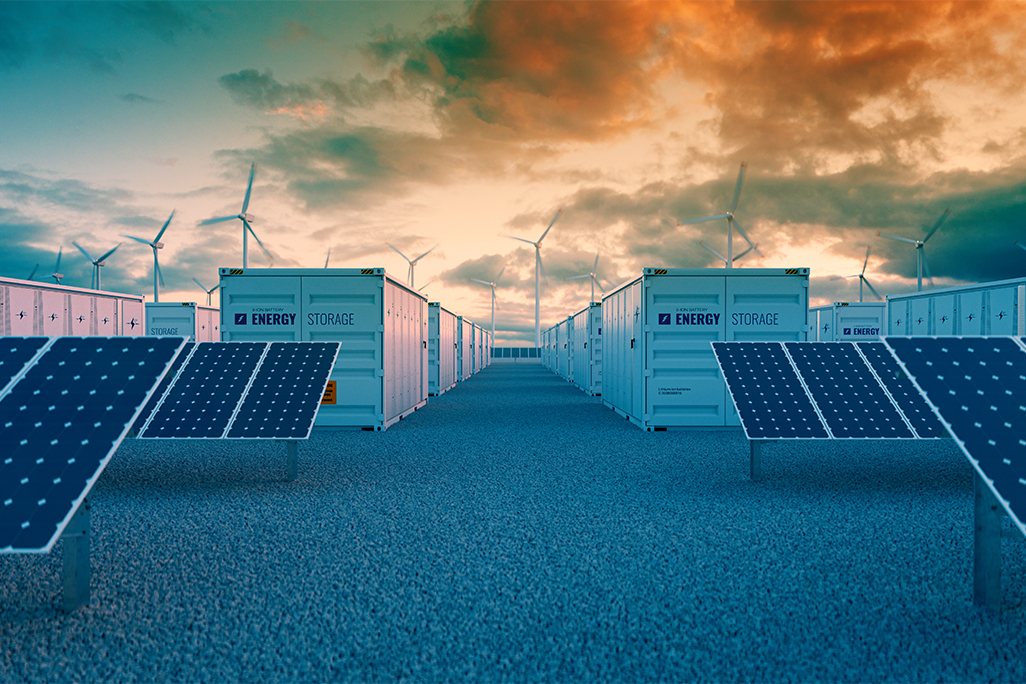The Energy Transition | UK closes last remaining coal-fired power station
Published on 1st Oct 2024
Welcome to our top picks of the latest energy regulatory and market developments in the UK's transition to net zero.

This week we look at the closure of the last coal-fired power station in the UK, the announcement that Great British Energy will be based in Aberdeen, a record high for UK renewables by energy generation share, and more
Last remaining coal-fired power station in the UK to close
After 57 years of operation, the Ratcliffe-on-Soar power station ceased generating electricity on September 30 2024. According to National Grid statistics, coal, once the most vital part of the UK’s energy supply, has been on a sharp decline, from constituting over 95% of the energy mix in the 1900s to just 1% by 2023. The closure of the station marks a crucial step in the UK's journey to a decarbonised power system (by 2030 under current government targets) and to net zero by 2050. All G7 nations have also agreed to end reliance on coal power by 2035 as part of a global commitment to accelerate the transition from fossil fuels to combat climate change – and in closing Ratcliffe-on-Soar, Britain is the first G7 nation to achieve this.
The decommissioning of the site will begin in October 2024 and is expected to take two years. The site currently has a Local Development Order in place in order to streamline the planning process around the re-purposing of the site, which, according to a statement by its owner, Uniper, could be developed for large-scale, low carbon hydrogen production.
The transition away from coal-fired energy generation in the UK has been rapid, with 25 coal plants closing or switching fuels since 2000, 15 of which occurred after 2012. Notable closures include Drax's remaining coal units in March 2021 and EDF Energy’s West Burton, a coal powered station, on 31 March 2023. The government has said that the West Burton station will be repurposed for the UK’s first fusion energy plant under the Spherical Tokamak for Energy Production (STEP) initiative.
Frankie Mayo, senior energy and climate analyst at Ember (the independent energy think tank), gave the following comment on the UK reaching this milestone: "The era of coal-free power begins. The UK has achieved something massive, shifting its power system from a huge polluter to one where renewables are thriving, in an astonishingly short period of time. But the work to build a clean power system will continue - to cut the need for expensive imported gas, to lower energy bills and to generate the clean electricity which will enable the rest of the economy to transition too."
Great British Energy to be based in Aberdeen
The government has confirmed that Great British Energy will be headquartered in Aberdeen. Two smaller, additional sites will follow and will be based in Edinburgh and Glasgow. The company will be initially located in government buildings across the cities, while permanent bases are established.
The announcement is intended to kickstart Great British Energy which is being established by the government in order to boost UK investment in clean energy, create jobs and support growth across the UK. An interim Chief Executive will be appointed soon, whose responsibility it will be to not only launch the company, but to get the Aberdeen base up and running. This role will run alongside start-up chair Juergen Maier who was appointed in July of this year, as we previously reported.
Public consultation on the cross-border connection project opens
Distribution and transmission network operator, SP Energy Networks (SPEN), has opened a public consultation on a major infrastructure improvement project designed to improve transmission between Scotland and England. The Cross Border Connection project is a joint development between SPEN and National Grid Electricity Transmission (NGET). The project will connect the proposed Gala North substation in the Scottish borders to a point just south of the Scottish-English border. SPEN would be responsible for required construction to the North of the border and NGET for the works in the south. The route would also pass the site of proposed 350MW Teviot wind farm, where a second substation would be constructed under the current plans.
The project would see between 75km and 85km of 400kV overhead line being built supported by 50m high transmission towers. The first round of public consultation on the project is underway from now until 28 October 2024. Following the consultation, more detailed plans will be developed, an environmental impact assessment commissioned, and a second round of consultation carried out. Final proposals can then be submitted to the Scottish Government Energy Consents Unit for its consideration. Construction of the project could begin as early as 2029.
Ewan Borthwick, senior project manager at SPEN said that “Cross Border Connection is a vital development that will strengthen the UK’s transmission network. This will help enable more renewable energy to be generated that will contribute towards Scotland’s and the rest of the UK’s net zero targets, as well as improving energy security."
ESO Launches the First Stage of its Pennine Voltage Pathfinder
The Electricity System Operator (ESO) has launched the first stage of its Pennine Voltage Control Pathfinder with three shunt reactors going live in the Pennines region. The reactors have been installed by National Grid Electricity Transmission (NGET) at substations in Stalybridge, Stocksbridge and Bradford West.
The ESO previously launched two shunt reactors in May 2024 as part of the trial, with the third going live this September. The final assets from Dogger Bank C windfarm are expected to go live in 2026. The reactors were awarded 10-year contracts beginning in August of this year, and form part of the ESO's 2025 commitment to operating the power grid at zero carbon capacity.
The trial comes after recent closures of large conventional power stations and has been implemented to help maintain voltages on the transmission network by acting as a replacement for the stations. It aims to reduce the need for reliance on traditional fossil fuelled power stations and cut down the overall cost for consumers. The ESO stated that the first two reactors have been in continuous operation since their launch in May and have been a useful alternative to more harmful and expensive options.
The project is also in line with the ESO's targets to deliver net zero. Julian Leslie, Director of Strategic Energy Planning at the ESO, commented that "the continuous use of these shunt reactors since May demonstrates their incredible value for the electricity network and their importance in keeping bills down for consumers as we decarbonise the electricity system."
Jon Davies, Director of Network Operations and Intelligence at NGET, added: “Making sure electricity supplies are stable and reliable is paramount as Britain’s energy system decarbonises. Our installation of these shunt reactors on our network as part of this innovative project is an engineering solution that supports ESO’s safe and secure operation of the system into the future, with significant savings for consumers.”
UK Renewables' Share of Electricity Generation Hits Record High
The Department for Energy Security and Net Zero has released the quarterly energy trends data, which show that the generation of electricity from renewables in Q2 of 2024 hit a record high of 51.6%, or 32.8 TWh. This is up on the previous quarter's record of 51.1%, and up 19% on the same period last year.
This trend has been influenced by a multitude of factors, but has primarily been attributed to more favourable weather conditions in the form of higher average wind speeds, as well as higher than average rain fall which resulted in increased wind and hydro generation. This increase is even more impressive given the fact that, despite the increase in solar capacity, solar generation fell 9.5% due to average sun hours being roughly 20% down on last year.
The figures also demonstrate that net electricity import dependency increased from 36.7% to 42.2%. For the second consecutive quarter, net imports have risen to record levels, reaching 13% of the UK's demand for electricity.
Jess Ralston, head of energy at the Energy and Climate Intelligence Unit, said that increased use of renewable generation sources is "helping to stabilise prices and reduce the amount of gas we need to import from abroad" but noted that “[g]as demand from our homes is still sky-high… which leaves us vulnerable to the international gas markets that set the price.”
This article was written with the assistance of solicitor apprentice Sumaiya Hafiza, paralegal Anita Ikpea, and trainee solicitors Harry Warren, Joe Sandom, and James Harnett.















